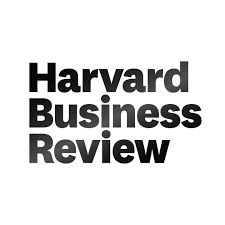It's Time to Invert the Management Pyramid

As time passes by, people and things change. Now, what if time passes by and people change, but things that should change, don’t?
It is not a stationary relic I’m talking about. I’m talking about the brand new dinosaur on the block – the classical management pyramid. Time has come to dismantle it and adapt to a new evolutionary and unstructured model that leverages the team effect to ensure that companies can lead change rather play catch up or be left behind.
A little rewind might be in order here to make my point. The management pyramid, as we know it, began to take shape around the early 1900s. There were two important factors that influenced the classical (traditional) management school of thought: The Industrial Revolution and the World Wars.
The Industrial Revolution brought along with it the problem of management and the Wars brought with them the solution. In every war there was the General, the man who controlled and commanded. He had ‘managers’ who reported to him; these managers in turn had several ‘assistant managers’ who reported to them, and the whole configuration went on to make the traditional organizational structure, or the Management Pyramid.
This configuration worked well — and why not, after all, it was borrowed from a very robust model that had proven to be successful in the most trying circumstances.
Back then, things were rather simple: Manufacturing was the buzzword, selling was not a very complicated process, folks were simple, families were joint, and ‘top-down’ management worked very well. Then, gradually, change began to set in and undid the traditional concepts of the individual and his workplace. It first liberated the joint family and brought in the nuclear family. With time, even the nuclear family structure began to erode in an increasingly individualized era. Every individual, irrespective of his age group, had his dream to pursue and sought his spot under the (real or virtual) sun. Strict parental control began to wane, fathers and sons found common ground, and friends gained influence.
Such drastic changes on the individual and family front understandably impacted the expectations from the workplace. Teams gained prominence against the individual, while collaborative brainstorming drove innovation and growth.
This called for an overhaul of the classical management structure. But that was not to be – the classical management ‘command-and-control’ structure remained and is still in active operation within the confines of an archaic management pyramid. And this old management model certainly does not create a conducive environment for teams of employees to thrive in.
Change, then, is the order of the day. And, when change sets in, this pyramid will get deconstructed. The ‘Me’ command will turn into the ‘We’ control. The focus will be on collaborative success, not on individual glory. The thrust will not be on one-stop command, but on a flexible, seamless workplace.
Yes, the traditional pyramid management structure needs some unstructuring. Flexibility is the key to survival in the 21st century, and organizational structure is no exception. It needs to be open to change, to take any shape that’s best suited to the organization.
Leadership would do well to shun the ‘Me’ approach and deregulate, decentralize and transfer a substantial part of the organizational control to the frontline.
It is the employees together who form the intellectual capital and, hence, need to be recognized as the most valuable resource for any organization. In fact, at HCL, the ‘Employee First’ initiative seeks to invert the entire organizational pyramid and make the whole organization accountable to the employee.
Simple as it may sound, the truth is that this is a very tough task. The question we must ask ourselves is whether we have within ourselves the fortitude to deconstruct the traditional power centres so that more emphasis is placed on the troops instead of the General.
Business models have to change. In a football game, there are 22 players but only one has the ball at any particular time. The other 21 are forming a configuration. The open-ended structure we are in is not about the man with the ball, but about the configuration of the other 21 people.
Every forward-thinking organization has to carry out a reality check about its willingness and capacity to unstructure so that it can adapt to the new 22nd century business ecosystem. So, do we have the vision to look upon our organizations as collaborative and evolutionary life forms that must keep changing along with the marketplace? Do we have the humility to step out of our egos and hand over the mike to our subordinates? Do we possess the courage to unstructure an existing, rigid regime that we have known to work in the past?
We often accept the verdict of the past and slumber into the cushioned inertia of best practices, until the need for change cries out loudly enough to stir us out of our comfort zones. It is time.
Originally posted on Vineet Nayar’s Blog site on Harvard Business: https://hbr.org/2008/10/its-time-to-invert-the-managem

